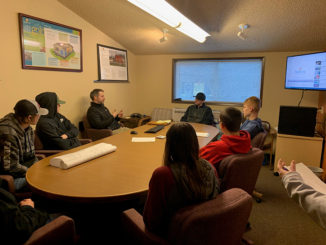 Louvers are a basic and simple part of many HVAC systems and buildings, but they are often overlooked or not given the proper amount of design time and consideration. After selecting a louver model that best meets an application, system designers need to consider certain characteristics. In this article, characteristics that affect water penetration, pressure drop, and louver installation will be reviewed. From the following suggestions, designers will maximize louver performance and ensure selected louvers meet the needs of their specific application.
Louvers are a basic and simple part of many HVAC systems and buildings, but they are often overlooked or not given the proper amount of design time and consideration. After selecting a louver model that best meets an application, system designers need to consider certain characteristics. In this article, characteristics that affect water penetration, pressure drop, and louver installation will be reviewed. From the following suggestions, designers will maximize louver performance and ensure selected louvers meet the needs of their specific application.
First, let us consider sizing louvers to minimize water penetration. Standard louvers are often used even though wind-driven rain louvers can significantly reduce or even eliminate water penetration. To keep rain from penetrating standard louvers in storm situations, size the louvers so their operating free area velocity is less than the maximum Air Movement Control Association (AMCA) beginning point of water penetration. While there is not an industry standard design safety factor, most experienced designers reduce the AMCA velocity by 15-20 per cent, depending on conditions. The benefit of using a wind-driven rain louver is that it is tested in driving rain conditions and you can safely use the published design velocities.
Another sizing consideration is the effect of bird or insect screens on louver pressure drops. All screens add pressure drop, but some designs are more restrictive than others. Standard 1/2-inch mesh (approximately 75 per cent free area) adds about 5–8 per cent to a louver’s pressure drop. If pressure drop is a ruling factor in your louver selection, accounting for the additional pressure drop should be considered. For insect screens (approximately 65 per cent free area) they add about 18 per cent to louver pressure drop. Also, insect screens tend to clog frequently with debris.
Louvers are available in a variety of round, triangular, and semi-round shapes. However, these special shapes do not provide the same performance as rectangular equivalent shapes. Two things to consider for these special shapes are free area and velocity. Shaped louvers often do not prevent water penetration as well as rectangular units with the same blade style. To lessen the potential for water carry over, it is good practice to reduce velocities through specially shaped louvers. Special shapes also negatively impact the free area versus louver free area percentage as the top and bottom usually have to compromise blade spacings.
Designers can simplify contractors’ lives by sizing louvers in dimensions that require the fewest sections. Louvers that are larger than their maximum single section sizes are shipped in multiple sections. A contractor must splice the sections together in the field to make the overall assembly. Splicing sections adds to the installation time. Refer to manufacturers’ literature for maximum single and multiple section information. Sometimes, just slightly shifting width to height or vice versa by a fraction of an inch will make the difference between a single or multiple section. This can reduce both the cost of the louver and the labour to install it.
Stationary blade louvers may be provided with rear-mounted blade supports to reinforce blades for wind loads. Blade supports ensure minimal deflection of louver components under windy conditions. Blade supports enable louvers to be made in larger single sections with less visible mullions. It is important to remember that blade supports may add several inches to the louver depth. This can create interference if items are located close to the back of a louver such as a damper. Manufacturers’ websites or sales representatives can assist designers with additional information regarding blade supports and other design details. See, for example, www.leads.ruskin.com for an excellent selection assistance tool.



